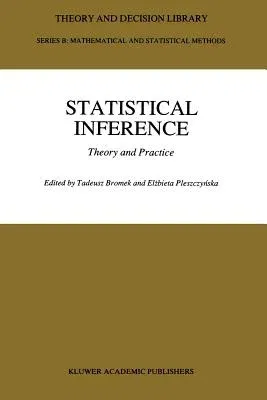Statistical Inference: Theory and Practice (1991)Paperback - 1991, 20 September 2011

Qty
1
Turbo
Ships in 2 - 3 days
In Stock
Free Delivery
Cash on Delivery
15 Days
Free Returns
Secure Checkout
Part of Series
Theory and Decision Library B
Print Length
320 pages
Language
English
Publisher
Springer
Date Published
20 Sep 2011
ISBN-10
9401067465
ISBN-13
9789401067461
Description
Product Details
Book Edition:
1991
Book Format:
Paperback
Country of Origin:
NL
Date Published:
20 September 2011
Dimensions:
23.39 x
15.6 x
1.75 cm
ISBN-10:
9401067465
ISBN-13:
9789401067461
Language:
English
Location:
Dordrecht
Pages:
320
Publisher:
Weight:
458.13 gm

